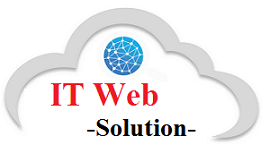The Future of Work: How Remote Access is Changing IT Infrastructure

The COVID-19 pandemic forced countless businesses to embrace remote work capabilities they had never used before. As companies shift to hybrid or permanent remote work models, their IT infrastructure needs to evolve as well. Providing secure, reliable remote access for employees is critical in today’s distributed work environments.
Supporting Work-From-Home at Scale
When stay-at-home orders spread across the globe in 2020, organizations had to scramble to equip their entire workforce for remote work. VPNs, virtual desktops, cloud apps, and other remote access technologies were quickly deployed to maintain business continuity. What was initially meant to be a short-term, emergency response became the catalyst for longer-term IT transformation. Companies realized they needed the capacity to provide efficient, secure access for both office and remote employees into the future.
IT leaders have recognized they need infrastructure that delivers reliable connectivity, collaboration tools, and data protection for a highly distributed workforce. The days of designing IT infrastructure for almost exclusively office-based employees have come to an end.
Securing Access from Anywhere
Enabling remote and hybrid work also introduces new security vulnerabilities that IT infrastructure must address. When employees access networks and data from personal laptops or uncontrolled home Wi-Fi networks, they bypass traditional perimeter defenses. This can expose corporate systems to malware, data leaks, or unauthorized access.
The experts over at ISG explain that as part of a thorough security risk analysis, companies need to evaluate these new potential threats that a distributed workforce creates. Multi-factor authentication, endpoint security tools, access control policies, and network micro-segmentation can all help secure both on-premises and remote access. Training employees on best practices for access also greatly reduces risks from improperly configured home systems or unsafe browsing habits.
Adopting Cloud Infrastructure
For many companies, moving towards cloud infrastructure is a key part of facilitating the shift towards location-agnostic work. Traditional on-premises networks and data centers assume that users and devices will be operating within the corporate environment most of the time. Cloud platforms, on the other hand, are built to provide connectivity anywhere the user has an internet connection.
Migrating services like email, collaboration tools, customer relationship management (CRM), and document storage to Software-as-a-Service (SaaS) cloud solutions makes supporting a remote workforce infinitely easier. Employees can stay consistently productive from home offices, client sites or even while traveling. Widely distributed teams can also collaborate more smoothly via cloud storage and videoconferencing.
Cloud infrastructure also enables IT teams to rapidly scale remote access capabilities up or down as demand fluctuates. Extra capacity can be spun up to securely support an influx of home users without expensive hardware upgrades. However, careful cloud migration planning is necessary to ensure performance, reliability, and user experience are not negatively affected.
The Lasting Impact of Remote Work
While remote and hybrid arrangements introduce new complexity, they offer benefits like greater talent recruitment, increased productivity, and employee satisfaction. When equipped with cloud platforms and secure remote access technologies, companies gain tremendous flexibility to adapt and innovate in a rapidly changing economic landscape.
Conclusion
The shifts towards remote work have sparked IT infrastructure modernization efforts in companies globally. Future investments will focus on tools and technologies keeping distributed employees connected and productive over the long term. As remote access becomes a critical pillar of doing business, IT leaders must prioritize securing and streamlining infrastructure for an era where working 9-to-5 at a central office is no longer the norm. Careful evaluation of infrastructure readiness combined with adoption of cloud and connectivity solutions will enable smooth ongoing transitions for both employers and their distributed employees.





